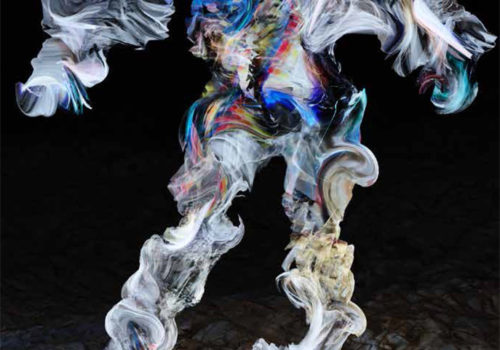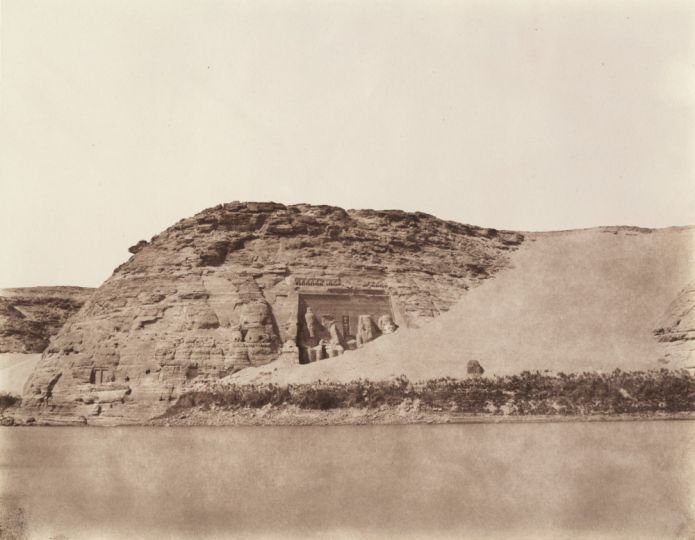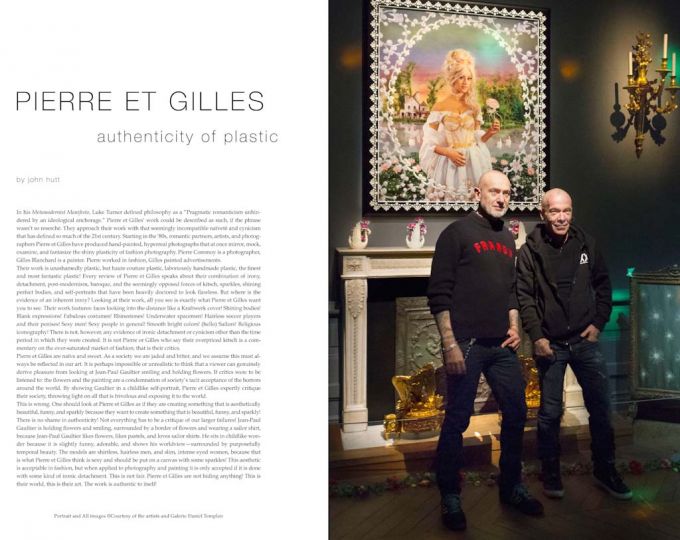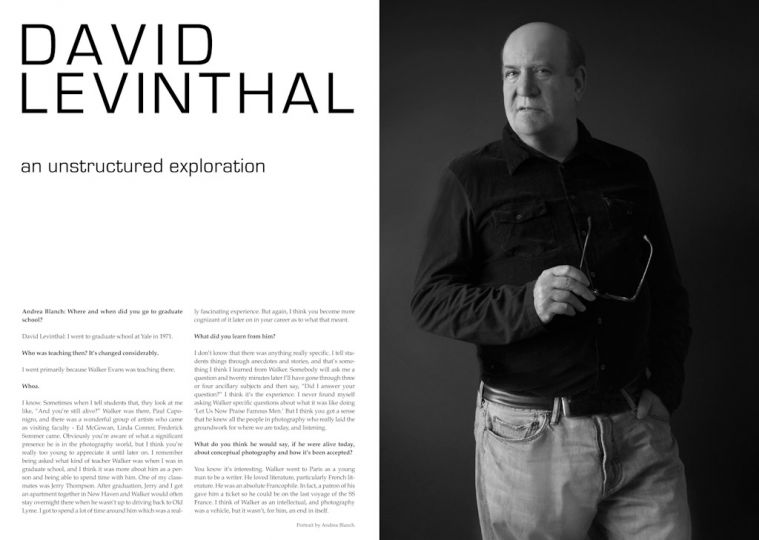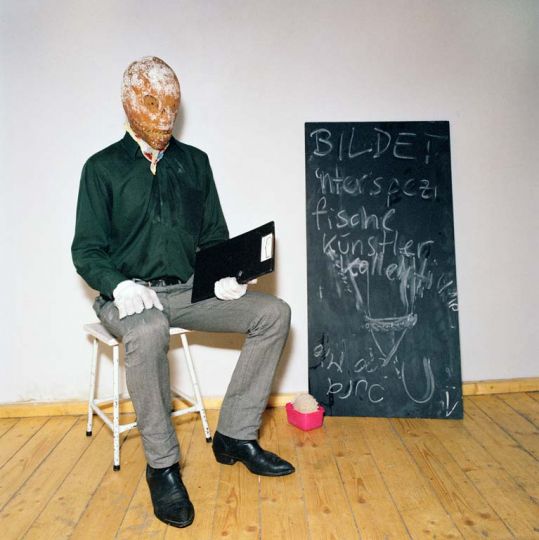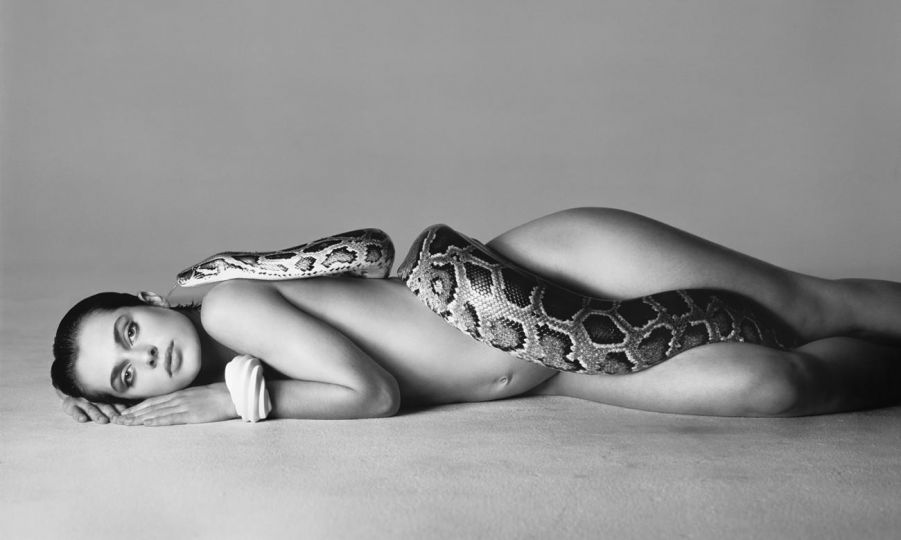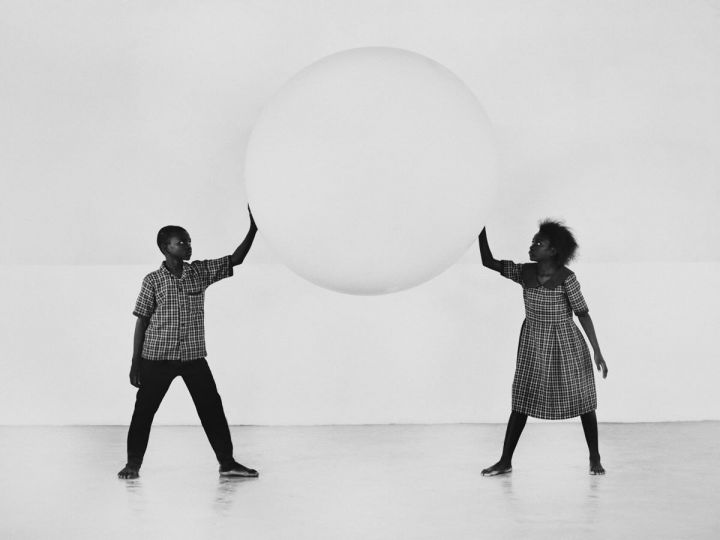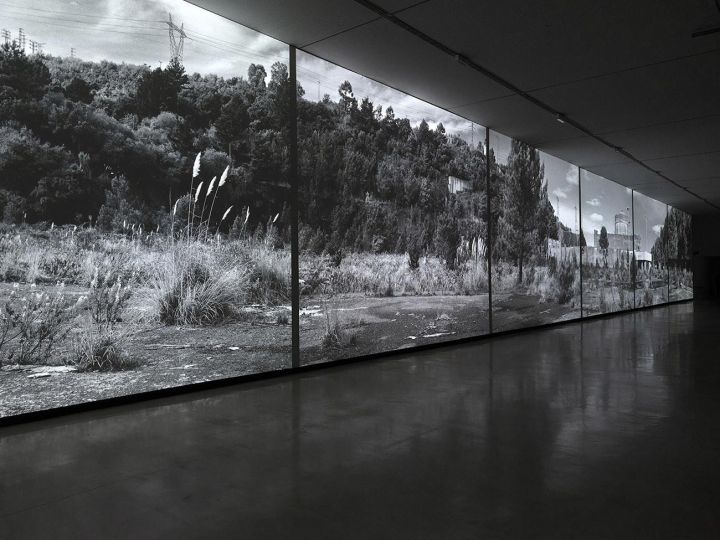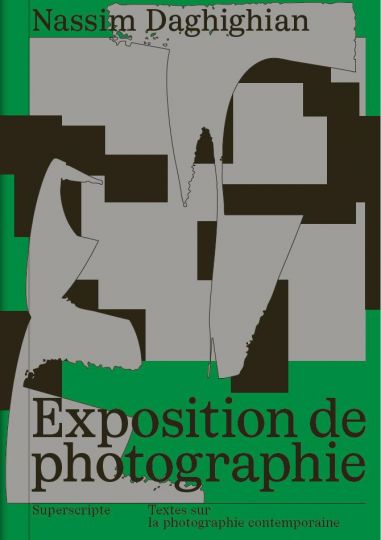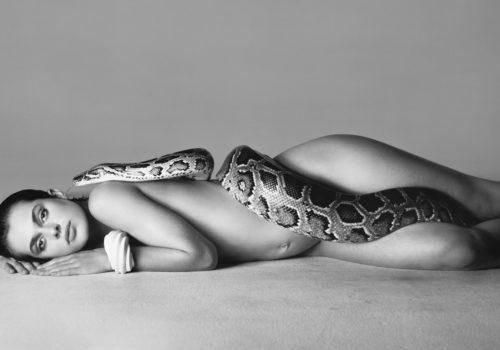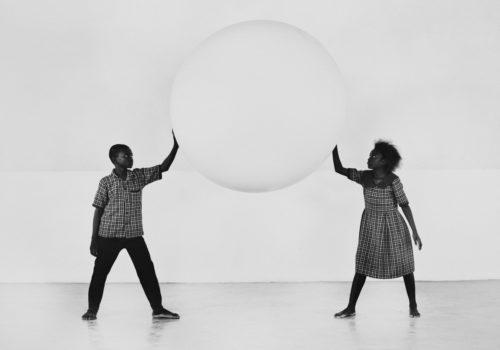Andrea Blanch: Two of your pieces, Mr. Realistic (Keeping America Clean) (2014) and Builder Destroy (Acid God) (2013), depict a person inhabiting a trash covered, post-apocalyptic environment. Where did the idea for this world come from? Is it a version for our own world? Is it an omen for the way we mistreat our environment?
Shamus Clisset: Yeah. When I got into working in 3D, my original approach was to realize that this 3D world was something analogous to our own world – it was this new, undiscovered territory that you’re creating while exploring it. All of this frontier imagery started to come into the earlier work, which was a lot about conquering a frontier in American history, but very much in light of where we’ve ended up and how we’ve conquered it. But, where are we now? We’ve paved it all over. My parents live in Colorado, which has become one of the most suburbanized…
AB: Where?
SC: The area outside of Denver and Boulder. It’s where I grew up. Back in the 70s and 80s, a lot of people went there to get back to nature, that’s why my parents moved there. In the meantime, it’s become the same suburban wasteland that you see everywhere across the country.
The imagery from my earlier work was commenting on that transition, which led towards this post-apocalyptic thing. Keeping America Clean is interesting because the figure in all of my works comes from one figure that evolves from one piece to the next, but I consider him the same character through each iteration. At the beginning, he was that destructor-type character, the explorer. Then, he becomes someone magical who cleans everything up from the destruction he had left in his wake. In a narrative, your mind goes off on tangents. So I might think of something, and then I make a picture that’s based on one idea that I had, and something in that will remind me of a different possibility. Then I’ll go and make a picture that’s almost like the two paths split: here’s the one path taken and the other one. In the 3D world you don’t have to follow any literal narrative; you create a library of different objects and scenarios. Some things from before end up in pieces that come later, other things are hinting at things that are going to come later that I don’t make – it’s all over the place. But all of the ideas are happening simultaneously for me. It just depends on which one I’m working on at the moment, that’s the one that will get finished first.
AB: It’s totally endless! You have to cut it off in your head.
SC: Yeah. Every finalized piece that you see has gone through dozens and dozens, if not hundreds, of iterations before I decide that that’s the final one.
AB: You insert yourself into your work in the form of an alias called Fake SC. How has Fake SC’ personality changed and evolved over the years? Is that what you just said or…
SC: Sort of, yes. This character wasn’t necessarily supposed to be me, but he was a way for me to put a character in there and make references to my own history and obsessions. He’s not literally an alter ego, but he’s someone I can play around with in that space. I give him superpowers and create these surreal environments that he can explore.
AB: What are your own obsessions?
SC: Thinking about where we are at in terms of digital media and where that’s gotten us. Last night, I was talking with a friend at the studio about how we all have these supercomputers in our pockets now, in the form of the iPhone. These things can do more processing-wise than computers could do just recently. Yet, what does everyone end up doing with that? No one fully understands it except the people building them, like Steve Jobs. We have all of the technology and potential – anyone can sit down and make amazing things now – but it hasn’t brought us any further.
We have no idea how these things actually work, so it almost becomes a magical thing: you just have faith that it does work. In my mind, there’s an element of a weird religious devotion to these devices and a supernatural connection to them, so I’m playing with these ideas of the digital mixed with all this American history, frontier stuff. I’m not the kind of artist that sits down and has a definite concept; every picture is a new thing where I’m just letting things happen.
« In my mind, there’s an element of a weird religious devotion to these devices and a supernatural connection to them… »
AB: Would you link your work to science in any way?
SC: I think it’s less science and more…
AB: Technology?
SC: There’s a quote by Arthur C. Clarke saying: “Magic is just science that we don’t understand yet.” I’m not obsessed with the technology, I’m more interested in the idea of building something in this 3D world that has no physical presence – it’s just data that has very complicated technical reasons for being the way it is. Underlying that, as a bigger picture, is that idea of working in this nonexistent space.
AB: What would you like the audience to come away with? Do you care about what people think? What are you trying to provoke?
SC: I want people to understand how the things are made, when I tell them that this is, for instance, a 3D rendering. With any new medium, that’s something you always struggle with. It’s just a matter of people becoming familiar with the digital tools, but you have to know that to fully grasp it. At the same time, I want it to be more of a discussion. I’m interested in how everything we encounter – even though it feels very physical – on the microscopic level, we’re dealing with energy. There’s no physicality to it, just a lot of empty space with electric and chemical bonds. With 3D, you’re making objects that are pure illusion. They’re not really there at all.
AB: How did you gravitate towards digital art? What about it provides a larger playground for your expression?
SC: I started out as a painter, then I got really fascinated with Photoshop in college over twenty years ago. I kept painting for a long time, but I slowly gravitated towards this digital tool because it allowed me to get away from the physical. I went from painting on canvas to painting directly in Photoshop. In the early 2000s, I started producing images in 3D rendering programs that were starting to look very realistic – it took this flat surface of the digital painting to an extra dimension. The 3D stuff was the next logical step from there. I just taught myself everything I could and that’s where I ended up, but it all comes back to that idea of wanting to distance myself from the physical.
AB: A lot of popular digital, mostly Internet art, exists in the realm of the uncanny valley or is glitch art, while your work is hyper realistic. What about this sense of realistic finesse is appealing to you and the goals of your work?
SC: That’s a really good question. There’s more and more digital work out there and a lot of younger artists doing all kinds of different work. I don’t dismiss the glitch stuff at all, but what I find interesting is this space in between the very real and the very unreal. With a 3D rendering, the space and the forms are very real, yet there’s something clearly off about it. That’s the space, visually and perceptually, that I’m really interested in. I love that 3D rendering is used in most practical purposes such as product pre-visualization or architecture.
« I see the 3D world as the closest thing to thinking about something and making it happen. »
AB: Would you say that Fake Shamus is a form of self-portraiture or self-invention?
SC: I started with the concept of him as a digital Golem. When I first got into 3D, I was reading a lot about the Golem myth and something just clicked for me: that you can make this sort of clay, figure-like creation and there were a lot of similarities in the way you were bringing it to life in the digital sense. Everything you tell the computer to do is followed literally, completely literally.
Anything that goes wrong is actually your fault. There’s a lot of Golem mythology where that same thing happens – you tell it to do something and it takes it very literally, and ends up demolishing a city or whatever. Over time, it’s almost like I wanted to give him a life of his own.
So instead of him just following my words – the instructions that I gave him – I wanted him to become more of my nemesis, or someone who was taking over the world as I was creating it. I was building these environments and putting him into it, and everything he touched he inhabited and made trashy. There are a lot of references to low-culture, especially in the earlier work.
AB: Who are your artistic influences, both digital and analog?
SC: Most of my favorite artists are painters from growing up. A lot of them have an irreverent streak, I’d like to say, like Sigmar Polke, Kippenberger, Mike Kelley.
Polke’s paintings from the 60s, 70s, 80s were a huge influence on how serious you should take the art world or art in general. There’s an aspect of him being very serious about making art that’s not entirely serious – I see myself and my goals in the same way.
AB: So you incorporate a lot of humor into your work, but unlike a lot of digital art, you don’t rely on glitches for laughs. In fact, it’s easy to mistake your work for photography. Do you strive to instill a sense of suspension of disbelief in your viewers?
SC: Yes, sometimes I want viewers to be completely doubting what they’re seeing. They think what they’re seeing is tricking their brain, yet they know it can’t be real.
I build things in my scenes to look almost photorealistic, but I think there are characteristics of them that don’t quite make it all the way there. That’s what makes it interesting.
AB: Would you consider your digital work a form of photography, sculpture, or painting?
SC: It’s something completely different. Obviously, there are elements of all of those processes built into it because you’re building visual sculptures. But then you’re giving them color, tone and texture through more of a painting process. Then you create the final rendered image with a virtual camera within the software, which has all the characteristics of a real camera. So you’re playing with all of these different things, but it’s not equal to any of those original mediums.
AB: I’m waiting for the day when you can just talk to your computer and it will do what you say, so I don’t have to learn how to do all of this.
SC: That’s actually one of the links I think about all the time. My problem with painting was my frustration with it not being able to come out the way I was picturing it. I see the 3D world as the closest thing to thinking about something and making it happen; the digital stuff will come directly out of our heads and we won’t even have to touch anything.
« I think, in the mass sense, in our daily lives, we’re now so connected, but at the same time we all feel distanced from each other. »
AB: Do you feel your day work informs your artwork?
SC: Not so much. The work I’m doing is very Photoshop based; I do the Photoshop stuff with my eyes closed. It comes very naturally to me now, because I’ve been doing it for so long. It sets up the perfect scenario for me – I can be doing the work without being emotionally invested in it.
AB: Do you think we’re failing or succeeding digitally? Where do you think we’re at with that?
SC: I think we’re in a very weird place with all of this technology. In the scientific world, it’s making amazing things happen, but on a daily basis there are things that we all hoped we would already have figured out. We don’t have flying cars yet, but it’s getting there.
Having self-driving cars is going to be amazing. I think, in the mass sense, in our daily lives, we’re now so connected, but at the same time we all feel distanced from each other. So there’s a weird two-edged element.
AB: Why would you feel distanced if you don’t talk?
SC: Right, exactly. So all of these tools that were meant to bring everyone together are used to spy on everyone. Everyone’s
got Facebook, Twitter and you get these little snippets of what’s going on, but you don’t have that real connection.
AB: Your pieces are so detailed and complex that they take weeks to render. How does this lengthy finishing process impact your creative process?
SC: It’s a natural part of the process and it doesn’t actually hinder anything. All of the work goes into building the scene and the objects, getting the materials and the lights right. When I’ve decided it’s done, I just hit render and let my computer do it for a week or two. In the meantime, I can go back and work on something else. If you make the object correct in a real world way, it will spit out a picture of it that looks real with all of the correct shading and highlights.
That magical process is what sucked me into it.
AB: Have you ever experimented with physical sculpting media or have you ever considered it?
SC: I have considered it a lot. But, because of my core concept of having something not physical, making it a lump of plastic, or just another sculpture, kills the magic for me.
AB: What about Marvel Comics? I can see your Fake Shamus in there.
SC: Oh, for sure. It’s just something that has to come out of the process naturally or play a specific role in that process, but it hasn’t clicked for me there yet.
AB: What are you working on at the moment? What are you and Fake Shamus excited about working on in the future?
SC: I’m bringing my work back a notch to the hyper-real, but working on compositions and scenarios that have a glitch aesthetic. The way I’ve set it up has a sort of chaos structure to it. I think I want to explore that a little bit more – taking elements of one picture and transposing them into different pictures. If you see the pictures side by side, you’ll make little connections.
You’ll see things being moved, transformed into something else, re-contextualized. Working in 3D means you have all these different things you can draw from. I like pictures that really play off of each other in that way. For example, “Beeramid,” that big beer pyramid of mine, and how it relates to a Christmas tree. Not just visually, but also conceptually. That’s interesting to me.
Interview published in Musée Magazine
http://museemagazine.com

